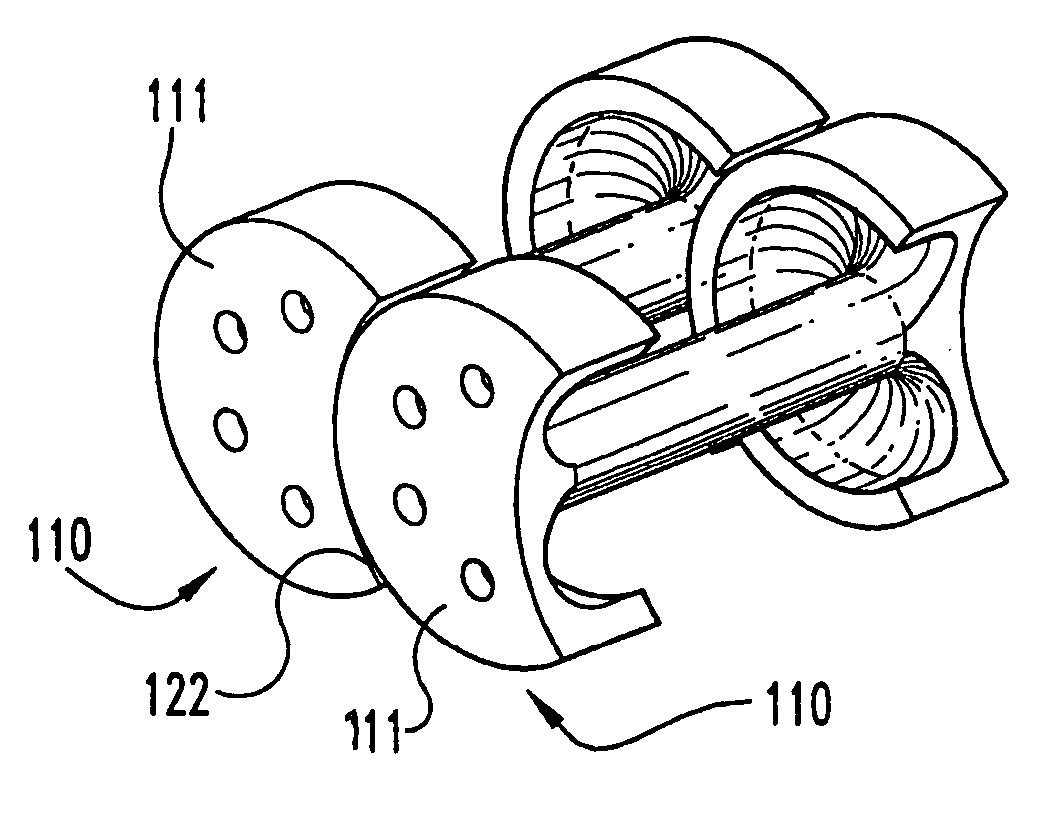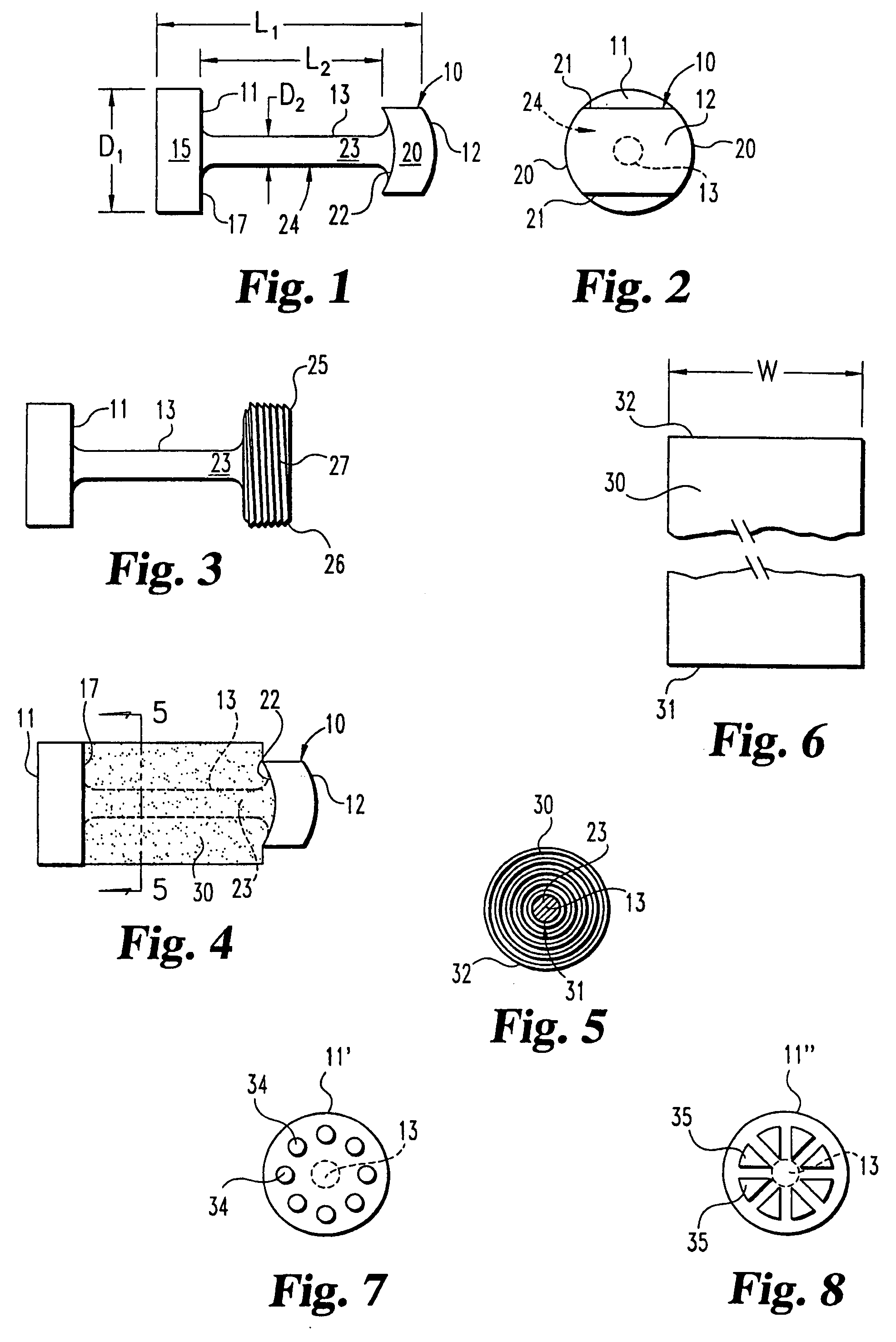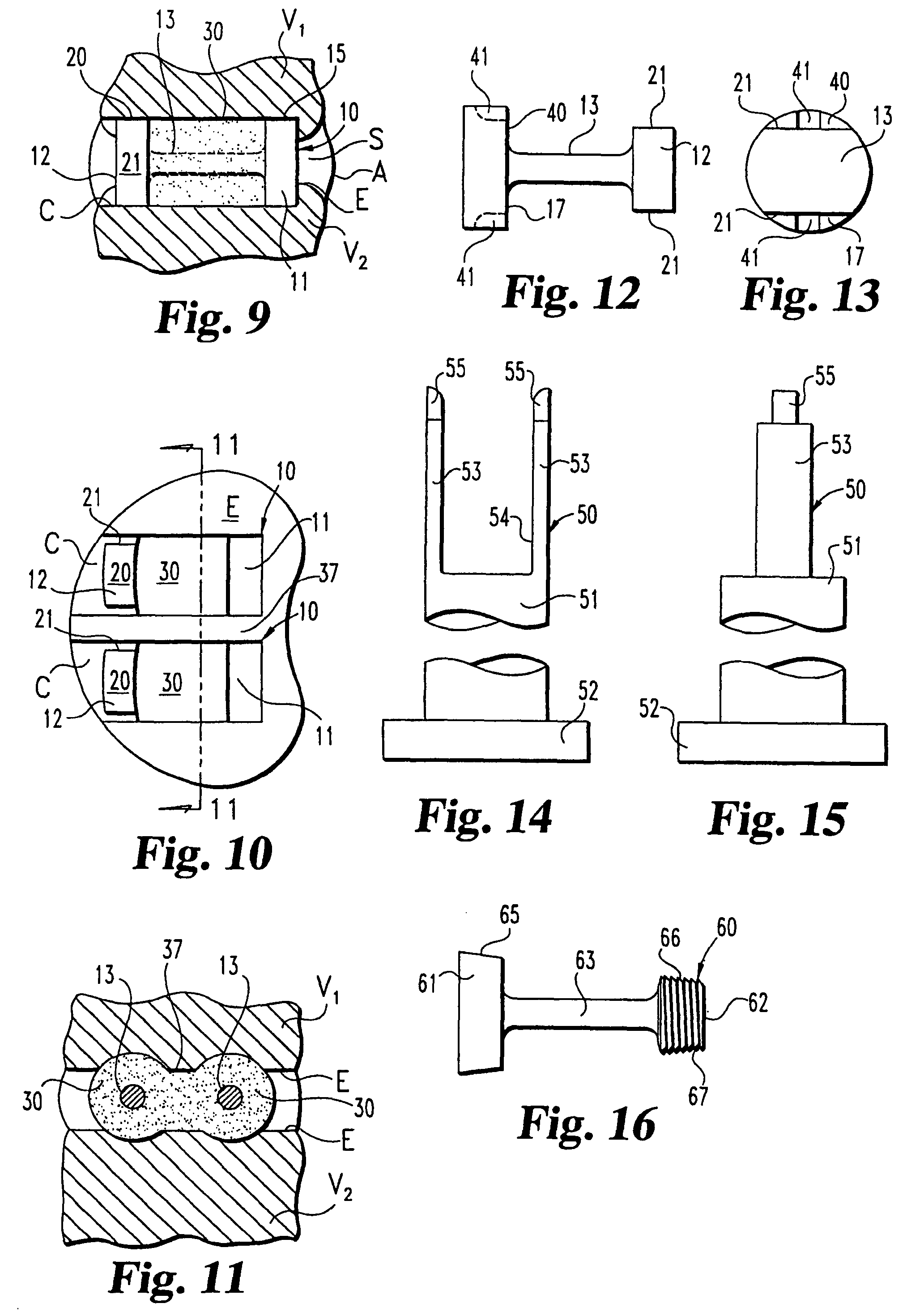Osteogenic fusion device
a fusion device and osteogenic technology, applied in the field of implants, can solve the problems of affecting the normal anatomical function of the disc, affecting and the hardware used to maintain the stability of the spine became superfluous, so as to reduce the chance of neurological complications or damag
- Summary
- Abstract
- Description
- Claims
- Application Information
AI Technical Summary
Benefits of technology
Problems solved by technology
Method used
Image
Examples
Embodiment Construction
[0069]For the purposes of promoting an understanding of the principles of the invention, reference will now be made to the embodiments illustrated in the drawings and specific language will be used to describe the same. It will nevertheless be understood that no limitation of the scope of the invention is thereby intended, such alterations and further modifications in the illustrated device, and such further applications of the principles of the invention as illustrated therein being contemplated as would normally occur to one skilled in the art to which the invention relates.
[0070]The present invention contemplates osteogenic fusion devices for use as interbody fusion devices. The osteogenic fusion devices include opposite end pieces that are configured to span the intervertebral disc space and engage the adjacent vertebral bodies. The inventive osteogenic fusion devices include a central element separating the two end pieces and substantially spanning the anterior-posterior length...
PUM
| Property | Measurement | Unit |
|---|---|---|
| dimension | aaaaa | aaaaa |
| outer diameter | aaaaa | aaaaa |
| concave shape | aaaaa | aaaaa |
Abstract
Description
Claims
Application Information
 Login to View More
Login to View More - R&D
- Intellectual Property
- Life Sciences
- Materials
- Tech Scout
- Unparalleled Data Quality
- Higher Quality Content
- 60% Fewer Hallucinations
Browse by: Latest US Patents, China's latest patents, Technical Efficacy Thesaurus, Application Domain, Technology Topic, Popular Technical Reports.
© 2025 PatSnap. All rights reserved.Legal|Privacy policy|Modern Slavery Act Transparency Statement|Sitemap|About US| Contact US: help@patsnap.com



